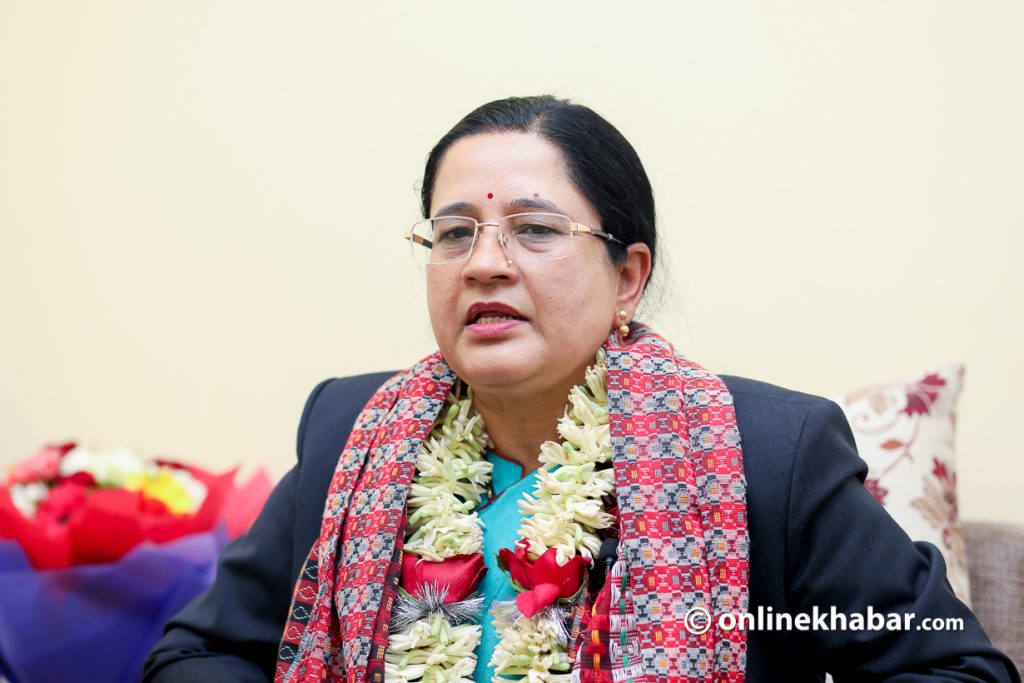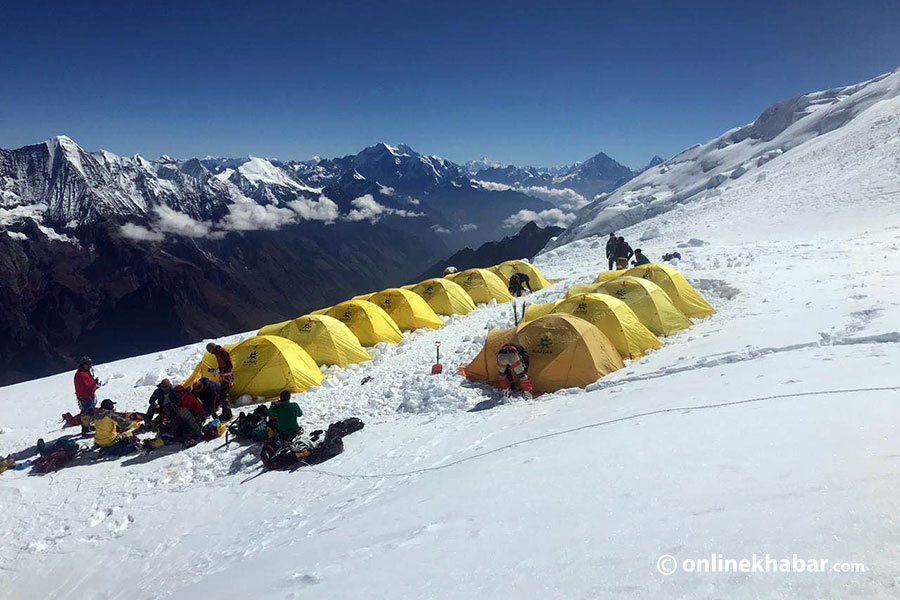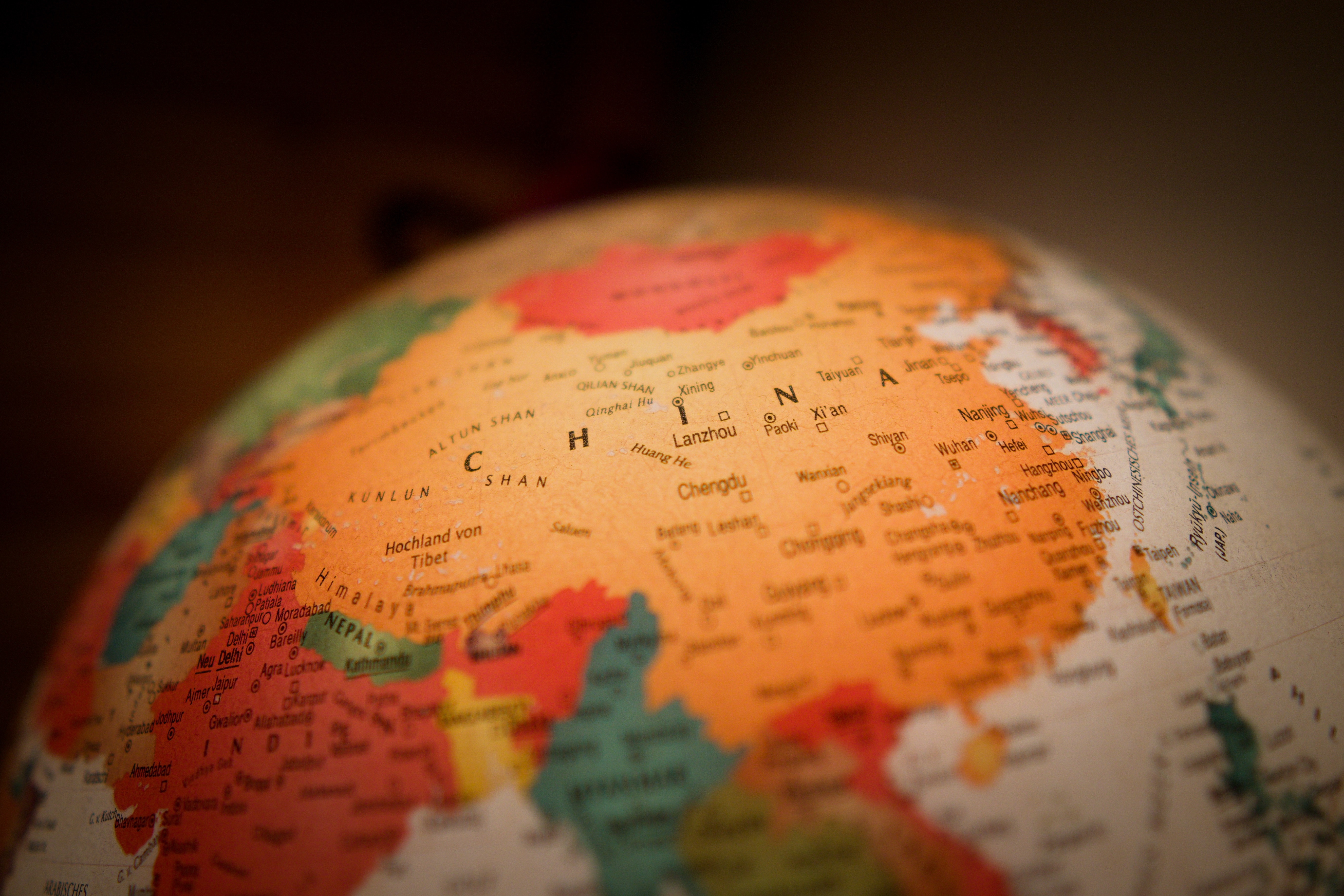
Nepal, situated at the vortex of expanding interest of her neighbours in South Asia and southwest China, holds a unique geopolitical position in the region and the world. Nepal’s geographic location has always made it necessary for her to pursue a balanced foreign policy to gain goodwill from her immediate neighbours and other powers beyond the region. However, present-day Nepal has failed to attain these objectives.
As a result, the country has become a venue for rivalry between the two regional powers and the powers beyond. Nepal should turn the pages of history and learn lessons from the past; she should adopt those policies from the past, which had enabled her to keep all foreign powers at arm’s length, ensure internal stability and thrive economically at the same time.
Regional geopolitical history
A brief survey of the regional geopolitical history illustrates that Nepal, shielded by the Himalayan rampart in the north and the thick malaria-infested forests in the southern Terai and further made inaccessible by the Chure and the Mahabharata ranges, had always remained a sovereign state.
However, its immediate neighbours, Tibet and India, were not so fortunate. In the north, due to their domestic conflict, the Chinese intervened in Tibet’s internal affairs in the 1720s. Towards the south, the Mughal power in India started to collapse in the 1750s, and the English East India Company, who had entered India as traders, started reaping the rewards of their successful campaigns.
Even in such a situation, the tiny principalities of this Himalayan region managed to remain isolated from regional politics, protected by these two formidable barriers.
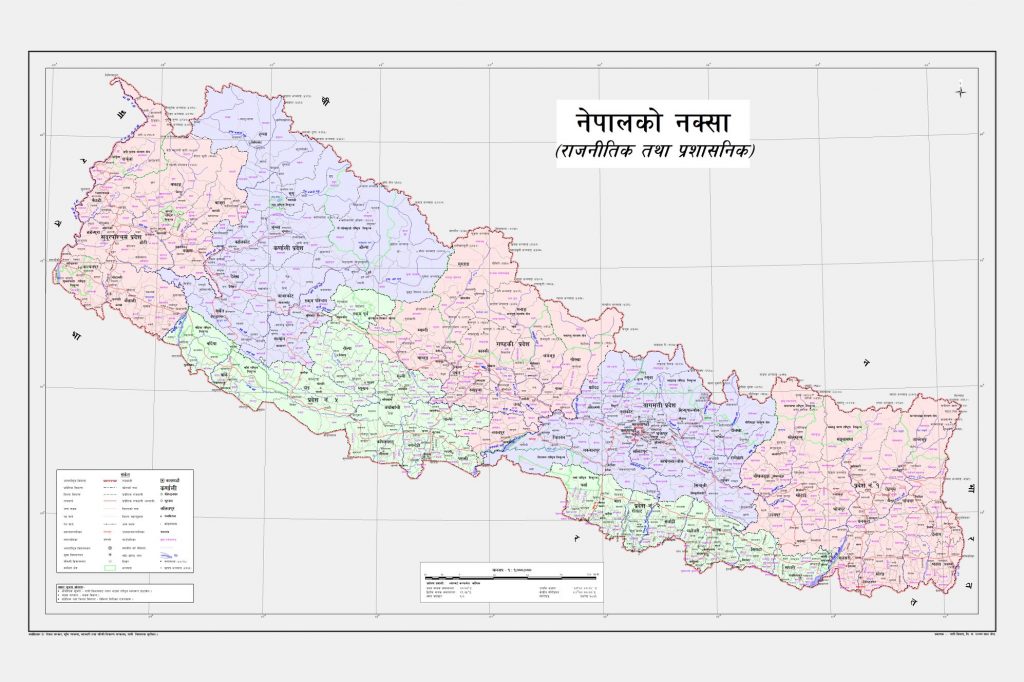
When King Prithivi Narayan Shah initiated his military campaign to unify Nepal in the north, the Chinese had already deputed their Amban (Chinese Military Governors) to monitor and control local events in Tibet in 1728.
In the south, the English East India Company had established itself as a military power and vigorously expanded its control over the Indian subcontinent. However, the Gorkhas thwarted their ambitions and annihilated them at Shinduli on November 6, 1767.
Based on his deep understanding of Nepal’s delicate geo-strategic location, the great strategist Prithvi Narayan Shah compared Nepal to a “Yam between two boulders” and stressed that Nepal must maintain a policy of equilibrium between its immediate neighbours.
After the Anglo-Nepal War(1814-18160), the British curtailed Nepal’s expansion and rose as an undisputable power in the Indian subcontinent. Towards the north, by 1818, more than 10 countries, including Nepal, were sending tribute missions to China, and the Chinese considered these countries to be under their suzerainty.
However, after 1840, the Northern Imperial power started to decline. Furthermore, the influence of France and Russia around the Indian subcontinent also started to decrease. Fluctuations in power are inevitable in geopolitics; thus, given the harsh international reality of the 19th century, the Ranas of Nepal adopted a realistic approach and sought a friendly relationship with the British in India.
Yet, the Northern neighbour’s attempts to assert her claim over Nepal had not ended. In 1913, they had invited Nepal to join her in a union of the “Five Affiliated races, namely Han Chinese, Manchus, Mongolians, Tibetans, and Muslims.”
They categorised Nepal amongst the so-called lost Chinese territories they hoped to reclaim. Thus, China sent numerous missions to Nepal to reaffirm its claim. Scholars mention that even in 1939, Mao Tse-tung had stated, “Nepal, Bhutan, and Burma were independent states that the Chinese had lost to the British Empire.”
The changed scenario in World War II
World War II completely changed the existing world order. The collapse of imperial powers and the flowering of nationalism in colonised countries was followed by India gaining independence in 1947 and the establishment of the People’s Republic of China in 1949.
After independence, India adopted a policy of integrating her smaller neighbours into her security perimeter to promote India’s interests. Amidst these regional changes, the Ranas, desperate to save their regime, signed the controversial Peace and Friendship and Trade and Commerce treaty with the Indians on July 31, 1950.
According to scholars, the 1950 treaty attempted to abolish the sovereign status of Nepal recognised by the British through the 1923 treaty. However, because the UK, US and France had entered into diplomatic relations with Nepal before India gained independence, India refrained from taking direct action against Nepal, as it had done against the Indian princely states and Sikkim. Otherwise, Nepal’s fate would have been sealed if that had not been the case.
Across the northern border, after what China terms “liberating Tibet” in 1950, Mao had stated, “Tibet as the palm and Nepal, Sikkim, Bhutan, Ladakh and the north-eastern frontiers areas of India as the fingers.”
This statement illustrates China’s regional policy and its initial views of Nepal during that period. Only from 1955 onwards, after the Bandung Conference, did China and Nepal establish preliminary contacts that paved the way for establishing diplomatic relations. Since then, the relationship has gained steady momentum in the ensuing years.
At the beginning of the Cold War, the India – China relationship had been symbolised by the slogan “Hindi Chini Bhai Bhai.”However, the honeymoon period ended after the brothers fought a war in 1962.
Nepal’s unique geostrategic location between the two antagonistic powers of Asia, India and China, and the bitter relation between the United States and the Soviet Union ensured that almost all the powerful international actors became involved in Nepal.
Thus, hoping to prevent the rise of communist movements in Nepal and to keep it safe from China’s and the former Soviet Union’s influence, the United States started to assist Nepal in the 1950s. During that period, Nepal took full advantage of the situation by exploiting the differences of interest between the neighbours and the global powers.
Nepal’s diplomatic relationships
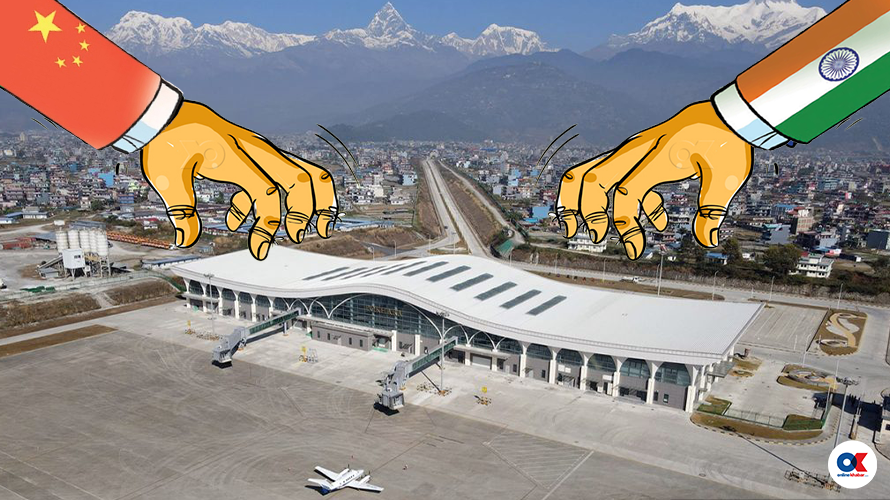
Nepal’s interaction history with our two immediate neighbours demonstrates that China has always remained the critical balancer in Nepal’s external politics. Using the Chinese factor, Bhimsen Thapa managed to keep the British at arm’s length while he advanced towards the areas west of River Mahakali. China has always supported independent decisions made by Nepal, from Nepal’s Zone of Peace proposal during the Cold War to the more dynamic, balanced diplomacy of the present era.
On the other hand, after independence, India’s policy towards Nepal clearly illustrates that it desires to infringe on Nepal’s independent status and ultimately bring Nepal under her fold. India’s insolence has led to many political upheavals between the two countries.
Determined to maintain their special status, time and again, the Indians have imposed blockades on Nepal and signed multiple agreements with various groups in Nepal, which has been detrimental to Nepal’s domestic and foreign policy.
She has not only encroached on Nepali territory but even established military posts inside Nepal’s territory and laid claim to them. These incidents have exposed India’s true intentions, thus leading many intellectuals to conclude that India has engineered political changes in Nepal to assert control over Nepal.
As for the US-Nepal relations, after the fall of the Berlin Wall and the collapse of the Soviet Union, the ideological war ended, and the US interest in Nepal also faded. The American aid decreased substantially.
However, with the recent rise of China, the US has sought to maintain closer links with India, and given Nepal’s geostrategic importance, their interest in Nepal has also increased. The Americans have thus sought to reengage more intensely with Nepal.
Scholars have noted that the Trump administration had listed Nepal as a critical partner and sought to expand its defence relationship with Nepal. The present Biden administration aims to influence Nepal to shape the strategic environment in which China operates.
They proposed a grant agreement under the Millennium Challenge Corporation (MCC) in September 2017 to develop the country’s electrical transmission lines and road network. However, many critics interpret MCC as a part of the US Indo-Pacific Strategy directed against China. However, Delhi firmly believes the US Indo-Pacific Strategy is a concept that is not directed against a third country.
The Chinese consider the US’s growing strategic interests in Nepal a threat and want to counter it. Thus, they have prioritised their relationship with Nepal, and as a sign of their goodwill, Beijing signed a transit transport agreement for third-country trade with Kathmandu in 2016.
This agreement ended Nepal’s exclusive reliance on India for transit trade. Then, in May 2017, Nepal became a signatory to China’s Belt and Road Initiative (BRI) project. During President Xi Jinping’s visit to Nepal in 2019, Nepal and China upgraded their comprehensive partnership to a strategic cooperation. The northern neighbour has established close military and security relations with Nepal and has overtaken India and the US in terms of military aid in recent years.
Both of Nepal’s strong neighbours have adopted different policies towards Nepal. Furthermore, with the US’s determination to place Nepal at the vanguard of their China strategy, Prithvi Narayan Shah’s Yam is caught between these three boulders and has become the focal point of their competition.
Lessons to learn from King Prithvi Narayan Shah
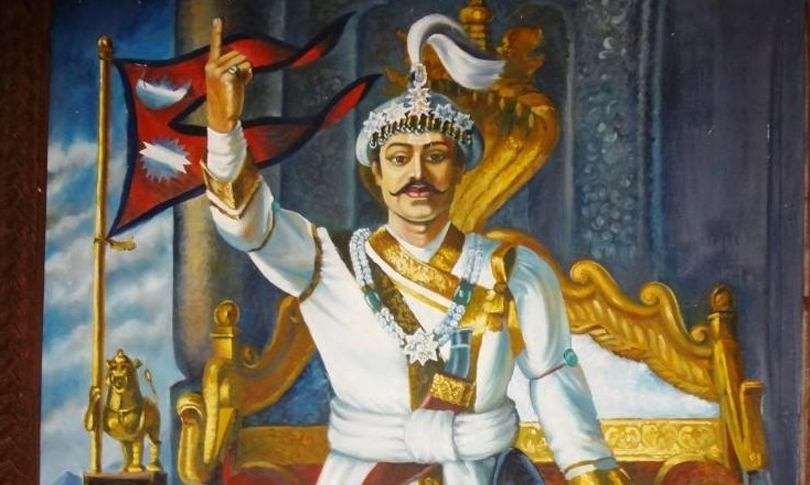
In such a scenario, Nepal must heed the past, take lessons from King Prithvi Narayan Shah and adopt his policies. He had managed to keep all the foreign powers at arm’s length while at the same time ensuring internal stability and a thriving economy.
He was an astute politician who understood that external affairs are an extension of internal affairs. An analytic study of his Divya Upadesh (final instructions) clearly illustrates that he strove for internal stability by looking after the welfare of the citizens.
He strengthened the military capability of the country and then cautioned that Nepal’s external affairs should aim to maintain a treaty of friendship with the emperor of China and also keep a treaty of friendship with the emperor of the southern sea.
The great king’s quote not only reflects the essence of unified Nepal’s external and security policy but also contributes to determining her worldview. His instructions have served as a guideline for the Nepali rulers throughout history. Whenever the rulers of Nepal have failed to act according to these warnings and tried to divert internal political conflicts to the external sphere, they have invited trouble.
India believes that Nepal has always remained under its sphere of influence and, thus, does not want China and the US to threaten its leverage, which they term a Big Brother role. Nepal should not discard India’s Big Brother role.
Yet, it needs to adopt a strategy to keep them from interfering in Nepal’s internal affairs, solve the border issues and focus mainly on better managing economic ties. China does not want an increased US presence in Nepal and desires to see Nepal prosper in her manner and not in the American way.
Regarding China, Nepal should ensure that no anti-Chinese activities are conducted on Nepali soil and cautiously prioritise those projects that enhance Nepal’s national interests. The United States thinks Chinese influence over Nepal is malign for their interest.
Nepal should become prudent and ensure that its partnership with the US focuses entirely on economic development and ensures its engagement with the United States does not threaten its immediate neighbour’s national interest and security.
Therefore, present-day Nepal should abide by the great king’s instructions and use its geostrategic location to its advantage as the past rulers had done while dealing with the neighbouring emperors across the sea.
Nepal should strive for internal stability and enhance national unity to present a united front. It must maintain diplomatic relations with its neighbours and the powers beyond in a sensitive manner to widen its room for manoeuvring, protecting and promoting its national interests.
At the same time, it should maintain a strategic balance and respect the fundamental strategic concerns of these global powers, which are unwilling to lose Nepal to the other side and prevent Nepal from emerging as the centre of the geopolitical rivalry of the global powers.






